Essential Avalanche Gear
Carry the Right Gear...
Having the proper gear is essential for safe, responsible backcountry travel. These tools can help you assess snowpack stability or rescue an avalanche victim. Remember, there is no time to get help: the only reliable rescue is for a touring party to rescue its own avalanche victims. The following is a list of recommended gear for the backcountry traveler:
Must Have Rescue Gear:

Avalanche Transceiver: Avalanche rescue beacons (also called transceivers or locators) have proven to be the only reliable way to locate a completely buried victim in time to save their life. Each person wears a transmitting beacon, and if someone is buried, the surviving members turn their beacons to receive and they can quickly locate the buried victim. Several companies manufacture avalanche beacons and they all operate on the same frequency. The technologies they use vary from being completely analog to completely digital, with some operating in a digital/analog mix. Each brand, and the technology they use, have their strong and weak points. Be sure to read our Beacon Tech section for the latest articles and reviews on this rapidly-changing technology. And most important, practice often with your beacon. The pros practice once per week. Always wear your beacon under your jacket, never in your pack. When you put it on, turn it on. When you take it off, turn it off.
Check out some independent beacon reviews
Buying a beacon here benefits the Utah Avalanche Center
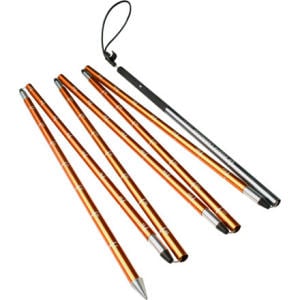
Avalanche Probes: An avalanche beacon will put you over a buried avalanche victim, but digging in dense avalanche debris is often very time consuming, so it's essential to get an exact location. That's where probes come in. Also, probes are the only way to find a victim who was either not wearing a beacon or wearing an inoperable beacon. Probes come in different lengths with 240cm being a popular recreational length and the minimum you should consider. They are made of aluminum or carbon, and have a screw or quick clamp fitting to lock the sections in place. Assemble probes like tent poles, toss the sections out on the ground and shake the pole sections while gently pulling the tension cable at the top.
Support the Utah Avalanche Center by getting your probe here
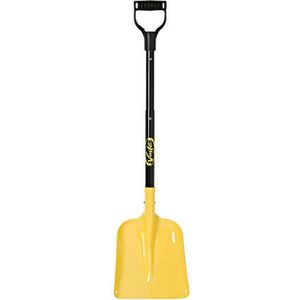
Avalanche Shovel: Everyone needs a shovel, not only to dig out a buried victim (avalanche debris is very dense and hard) but to dig snowpits to assess the snowpack stability and even to dig out your car or snowmobile when it gets stuck. Modern shovels are constructed out of strong lightweight aluminum. Plastic shovels, shovels without a handle, and blades smaller than 8 inches by 8 inches (20 x 20 cm) are not recommended.
Check out the Voile Telepack shovel

Backpack: A lightweight, comfortable pack is a key element to carry you backcountry gear. Many packs also have features that allow you to organize your gear for convenient access. Packs are available that will carry just the basics like your shovel, probe, repair and first aid kits, and extra clothing up to multi day packs that carry a large volume of gear. Many packs also have features like external shovel pockets and hydration systems as well. A quality pack will also have a waist and sternum strap to keep the load secure during athletic activities. Packs are available with a built in Avalung.
Backcountry.com offers a wide range of ski packs
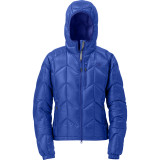
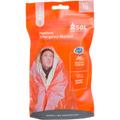
Warmth
Even in the Wasatch, close to the city, rescue is hours away. Be sure to carry a way of staying warm and dry. Lose a glove on a windy ridge? Having a spare could save your day and maybe your fingers.
Protect an injured person until hep arrives with an Adventure Medical Emergency Shelter
A lightweight, warm down jacket like these from OR can save your life in the backcountry
Specialty Avalanche Survival Gear
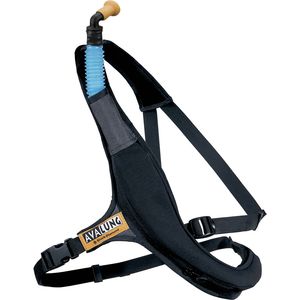
AvaLung: Be honest. How fast can your friends dig you out? Most completely-buried avalanche victims only have about 15 minutes to live under the snow, but an AvaLung can increase that time up to an hour. Along with a beacon, the AvaLung is an important piece of life-saving equipment. The AvaLung (in a vest, a over-the-chest sling, or build into a pack) offers critical oxygen intake that buys you precious time while buried under snow. Designed to extract air from the snow, it works to redirect carbon dioxide away from your oxygen-intake zone, reducing ice masking and CO2 poisoning of your oxygen supply.
Backcountry.com offers a range of avalung options, either as a stand-alone unit (shown) or incorporated into a pack.
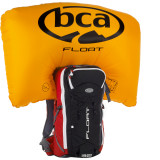
Air Bag Pack: Admit it. When you go to a party, you gently shake the bowl of potato chips so that the largest ones rise to the surface. Similarly, larger objects tend to rise to the surface of avalanche debris. By pulling a rip cord, the avalanche air bag in your pack adds 150 liters or more to your volume. Used for over ten years in Europe, the statistics are impressive, roughly doubling your chances of surviving an avalanche. The air bag system is now available in North America and it is rapidly gaining popularity. As prices and weight continue to drop, the air bag will most likely become standard equipment for all backcountry travelers.
Check out the latest airbag packs at backcountry.com
Snow Study Equipment
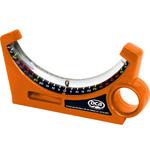
Slope Meter: The steepness of a slope is critical in determining whether a certain slope will avalanche. Judging slope angles is one of the most basic and crucial skills in avalanche assessment. A slope meter is a must for people who are just learning to judge slope angles as well as for the professional who needs to constantly confirm slope angle judgments. Also available are slope angle measuring devices that attach to a ski pole and mobile phone applications that measure slope angle.
BCA offers a great Slope Meter
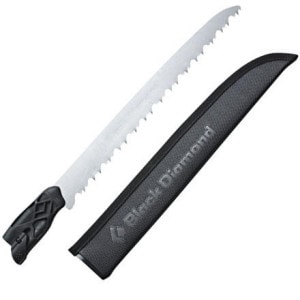
Snow Saw: Avalanche professionals depend on snow pit tests to keep themselves and others alive. Snow saws allow you to quickly and easily isolate columns for stability tests when doing snow profiles. Modern snow saws can quickly cut through even the hardest snow, making them essential equipment for igloo building as well. Saws come in foldable and non-foldable styles.
Backcountry.com offers a wide selection of snow saws
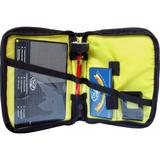
Snow Study Kit: These kits typically contain a magnifier and crystal cards for identifying and sizing snow grains and a thermometer for temperature profiles. Many also contain a slope angle measurement device.
BCA offers a good snow study kit
Need to buy gear? Want to help the Utah Avalanche Center at the same time??
Backcountry.com has generously offered to donate a percent of all purchases made by linking through this site to the Utah Avalanche Center. Remember, you must link to Backcountry.com through the Utah Avalanche Center site to apply their donation to the UAC.
Think you know your stuff? Need gear? Pass this quiz and receive a discount on BCA avalanche gear from our friends at Backcountry.com
REI also donates a portion of sales through this link to the UAC. Buy stuff online, have it shipped (free!) to your local store, and benefit the UAC.








